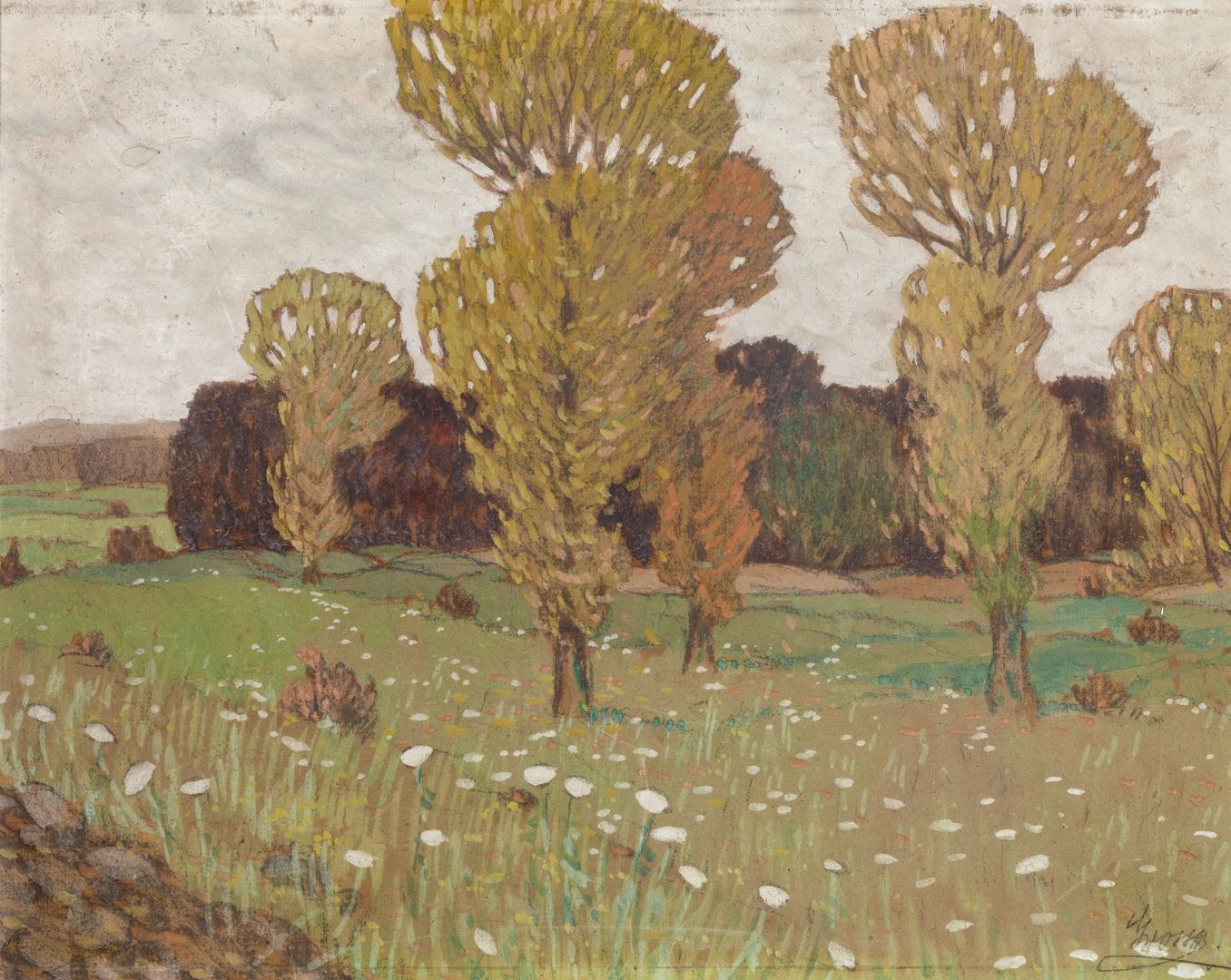Hall 3 - 4. view
July
GROSS, BÉLA (1835–1914)
July, c. 1900
mixed technique on paper, 36x51 cm; marking at the bottom right: Gross B.
Fine Arts Collection, Inv. No.: 90.203.
Very little is known about Béla Gross aside from the fact that he hailed from a merchant family in Miskolc, despite being a regular participant at exhibitions in Budapest for over five decades. Following his demise, Károly Lyka briefly reminisced about his career and painting. From 1853, he regularly travelled between Pest, Vienna and Munich during his student years. He first attended the school of Jakab Marastoni in Pest, after which he studied under the renowned Biedermeier painter Ferdinand Georg Waldmüller in Vienna. In 1854 he attended the Academy of Fine Arts at Munich for a year, then moved back and alternated between Pest and Vienna. He ultimately settled down in Pest during the early 1860s, where he became acquainted with several distinguished customers. Most of his painting consisted of ‘portraits, head studies, idealized and character heads’ and he participated at exhibitions with similar works as well. He never took part the modern artistic pursuits of his period. According to Lyka, his artistic vision remained the same as it was in his youth, with the inclusion of an academic level thoroughness as well as the addition of naturalistic and idealizing elements.
The painting titled July represents a surprising contrast to his otherwise more conservative vision, which shows that Gross was able to react to the shifts in artistic trends. According to Gertrud Goda, ‘This unnoticed but nevertheless shining example of Hungarian landscape painting breaks away from the naturalistic principles and includes Art Nouveau elements. The clearing surrounded by a grove features tall white flowers similar to the poppy fields of Pál Szinyei Merse, forming a nearly continuous plane which harmonizes and rhymes with the small clouds floating in the sky.’
The rather unusual painting of Béla Gross, which is most likely not the only artwork of this kind in his oeuvre, was purchased and added to the collection of the museum in 1990, with correspondence from the MissionArt Gallery.
Ákos Barkóczi
